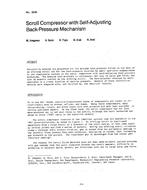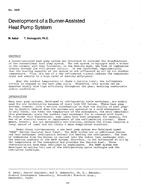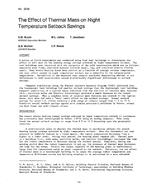-
-
Available Formats
- Options
- Availability
- Priced From ( in USD )
-
Available Formats
-
- Immediate download
-
$16.00Members pay $7.00
- Add to Cart
Customers Who Bought This Also Bought
-

KC-2846 -- Scroll Compressor with Self-Adjusting Back-Pre...
Priced From $16.00 -

KC-2828 (RP-391) -- Estimates of Recommended Heat Gains D...
Priced From $16.00 -

KC-2835 -- Development of a Burner-Assisted Heat Pump System
Priced From $16.00 -

KC-2838 -- The Effect of Thermal Mass on Night Temperatur...
Priced From $16.00
About This Item
Full Description
This study is part of ongoing research to develop a mathematical model for predicting heat-and moisture-transfer processes in attics during the winter. Such a model would provide a rational basis for the generation of attic ventilation guidelines for preventing condensation (or frost) formation at the underside of roof sheathing.
A small test house having a pitched roof/ventilated attic was installed in a high-bay environmental chamber. The test house and its attic were extensively instrumented for measuring heat and moisture transfer. The test house was subsequently exposed to a series of steady and diurnal outdoor climatic conditions. Representative conditions of a residence were simulated within the test house.
Several tests were conducted with the attic closed off (i.e., no ventilation was provided). Other tests were conducted with the attic ventilated at a rate equivalent to soffit venting for a residence. Some tests were conducted with house air induced to exfiltrate through the ceiling construction into the attic. An unexpected finding was that attic condensation at the underside of the sloping roof did not occur under any of the test conditions.
A mathematical model was developed that included the adsorption of water vapor at wood surfaces in the attic. This model closely predicted the attic dew-point temperatures for both the steady and dynamic outdoor cycle tests. The model showed that wood surfaces of the attic at a moisture content of 12.5 percent (by weight) adsorbed water vapor and maintained the wood surface dew-point temperature below the roof sheathing temperature, thereby preventing condensation. The mathematical model predicted that the wood surfaces in the attic would continue to adsorb water vapor until they attained moisture equilibrium with the attic air, after which condensation would occur.





